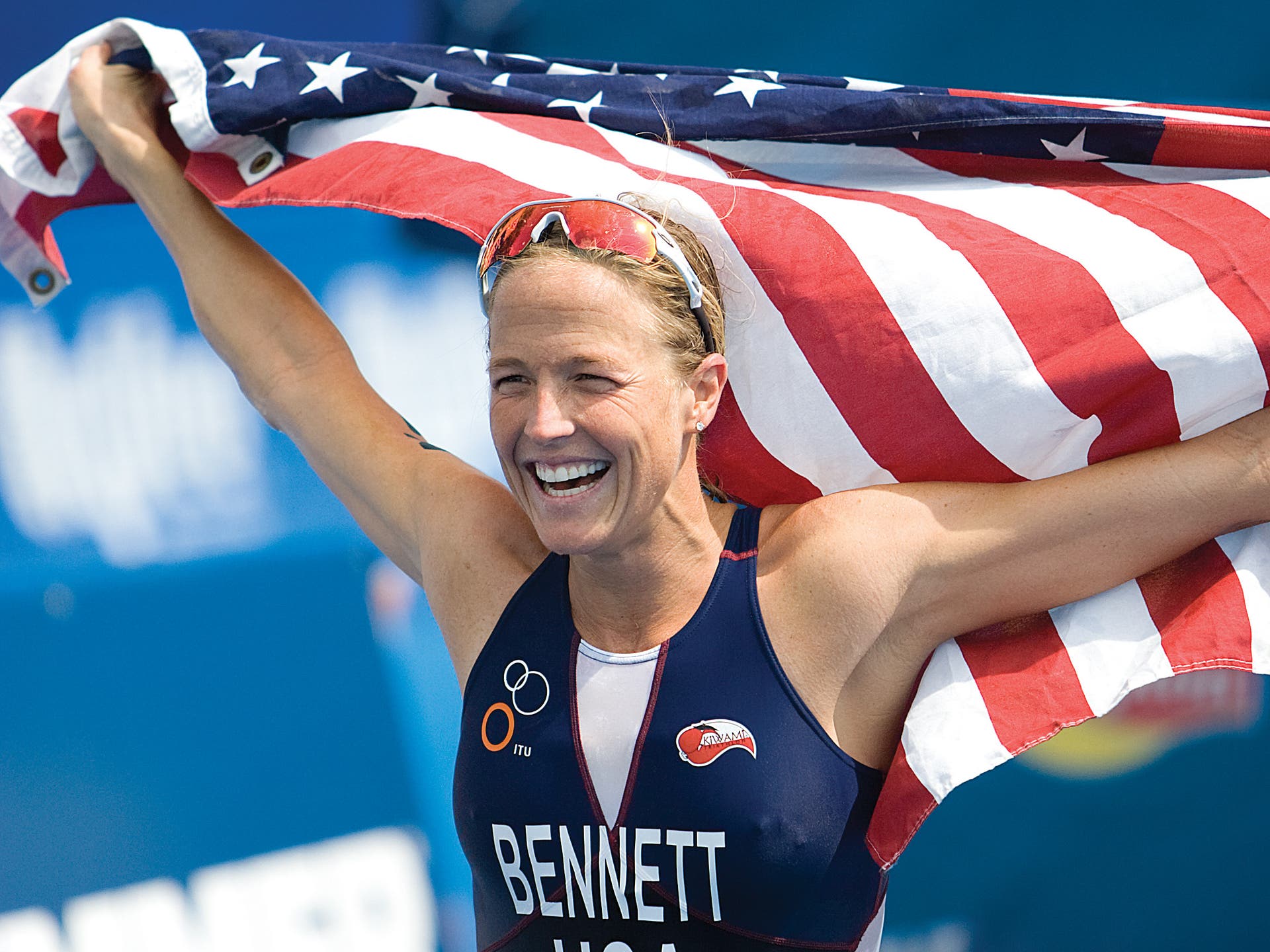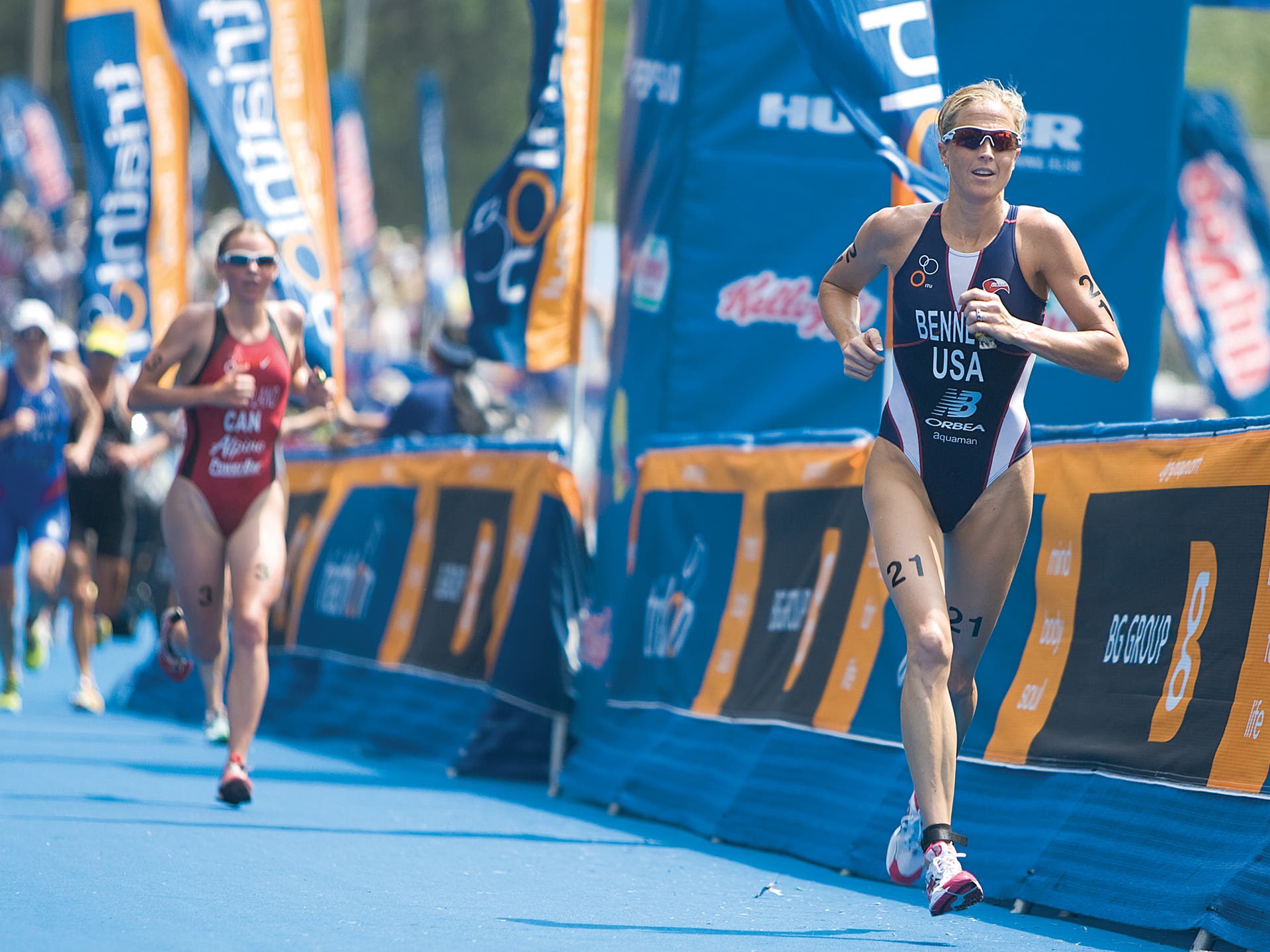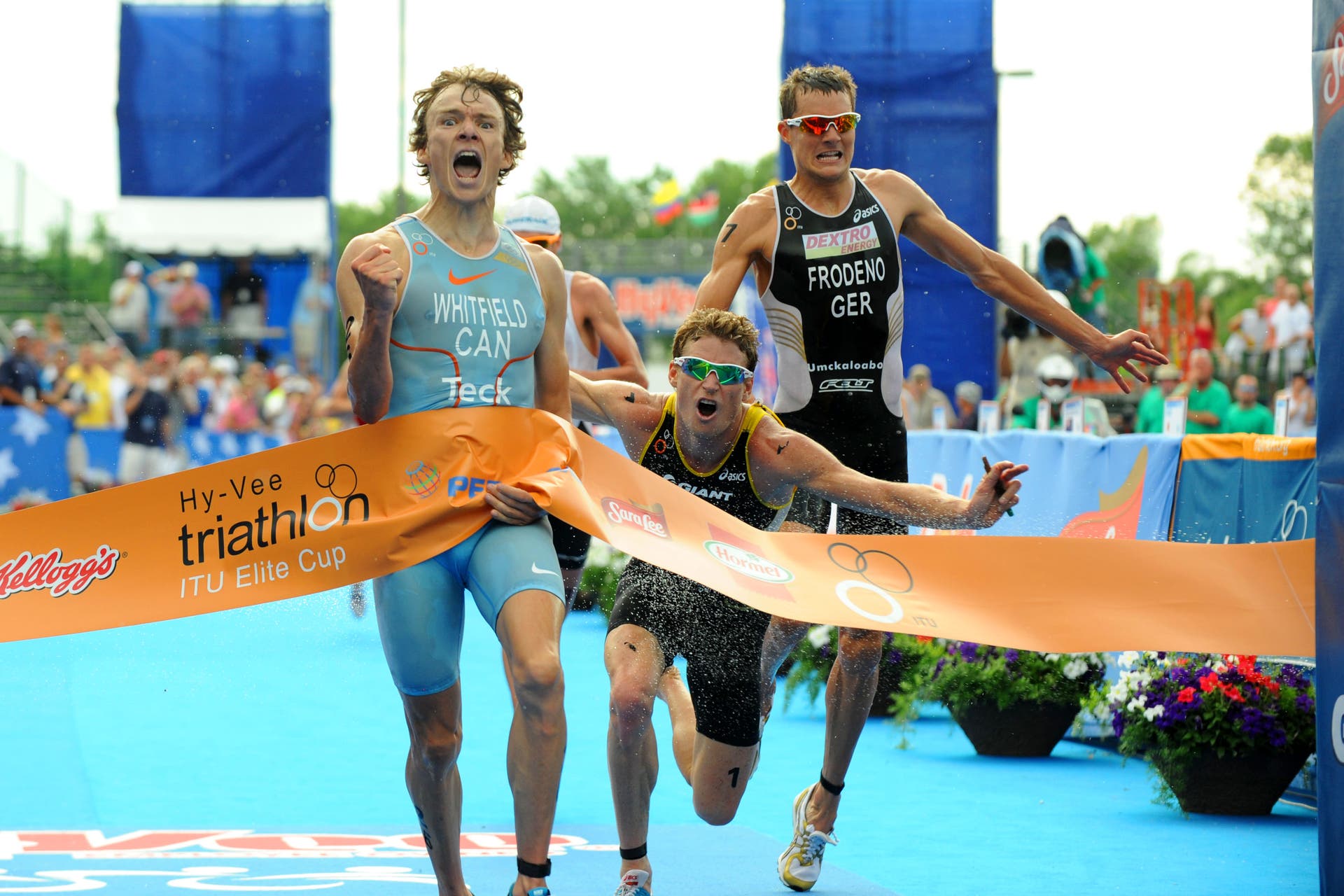Recalled: Hy-Vee's Epic Prize Purse

Laura Bennett collapses after taking the Hy-Vee title. (Photo: Robert Murphy)
With the racing world on pause as the planet continues to cope with the COVID-19 pandemic, Triathlete will dip back into the archives and revisit some of the biggest, most inspiring, and somewhat under-the-radar moments in triathlon. Today, we’re rewinding back to 2007, when a supermarket chain based in Iowa assembled an all-star field of pros chasing the biggest prize purse in the history of the sport.
On June 17, 2007, Laura Bennett, a pro triathlete from Boulder, Colo., won the inaugural Hy-Vee ITU World Cup Triathlon in Des Moines, Iowa in 2 hours, 4 minutes, and 32 seconds. Which, as a standalone stat is impressive–but perhaps not astonishingly so. What is mind blowing, however, is that by virtue of her victory that day, Bennett earned a $200,000 paycheck. And if you do the quick math, that amounts to banking approximately $1,606 each minute she was on the course.

It was an unforgettable moment for Bennett, one of the most decorated triathletes to ever don a Team U.S.A. kit. And it was an unprecedented moment for triathlon. In a sport where winners of the Ironman World Championship take home a $120,000 check for their efforts on the day, this type of pay out (especially for a non-championship, Olympic-distance event) was staggering. In fact, the $700,000 prize purse (including $40,000 to the runner-ups, $15,000 for third, and multiple primes) offered to pros was the largest in the sport’s history at the time.

So why so much money? And why Iowa? The story goes that Ric Jurgens, the CEO of the Hy-Vee grocery store chain and a recreational triathlete, wanted triathlon to bring to Des Moines what the golf and the Masters Tournament brought to Augusta: A showcase of phenomenal talent, streets lined with spectators, and a deep prize purse that would attract the world’s best. Plus, the event, which would also feature an age-group race for the masses, ticked the boxes of the multi-billion-dollar company’s initiative to improve health and wellness among their customers and employees.
In 2007, Jurgens set out to fulfill that vision. While Des Moines may have been an unexpected location for an international event (and only the fourth U.S. city to host a World Cup elite triathlon at the time), it delivered. Drawn by the glittering prospect of big bucks–not to mention a brand-new Hummer H3 vehicle to each winner–the top draft-legal specialists from across the planet assembled for a race around the capital city. Some 2,000 age-group athletes and 10,000 cheering fans showed up as well.
With a 1:30 p.m. start time, the temperature hovered around 90 degrees when the gun went off for the elite race. On the women’s side, the soaring heat ultimately knocked several stars out of contention during the run, including Canada’s Kirsten Sweetland, who collapsed to the ground after leading with just one kilometer to go. Bennett held strong, though, and powered to the finish line first, 14 seconds ahead of Australia’s Annabel Luxford. The men’s race saw Denmark’s Rasmus Henning take the win, 30 seconds over New Zealand’s Bevan Docherty.
On the heels of the inaugural event’s momentum, the 2008 race once again offered $200,000 a piece to the top male and female–and doubled as the final U.S. Olympic qualifier (Hunter Kemper and Sarah Haskins earned spots on the Beijing squad there, each finishing sixth in the stacked fields, respectively). In 2011, the race served as the World Triathlon Corporation’s 5150 Series U.S. Championships, upping the ante with a record-setting $1 million prize purse (Sweden’s Lisa Norden and Australia’s Greg Bennett–Laura’s husband–clinched the lion’s share of the prize money that year).

Hy-Vee eventually ran its course with the race. After Ric Jurgens retired in 2012, the company cut the prize purse in half before backing out of the title sponsorship role the following year. The race was eventually scooped up by Premier Event Management, which folded it into its Escape Series, but that floundered and stalled in 2017. Most recently, Ironman identified Des Moines as the site of the 70.3 North American Championship, which has been rescheduled from June to October in the wake of the COVID-19 pandemic.
The days of an elite ITU athlete–or almost any pro triathlete, for that matter–earning six figures for winning a race may be all but a fuzzy memory. (To compare, in 2019, each World Triathlon Series race offered a total prize purse of $150,000, with winners earning between $18,000 and $30,000, plus bonuses.) Which makes the Hy-Vee event that much more of a standout event in the history of the sport. After all, for the better part of seven years, the race and the city of Des Moines made athletes from around the world feel like they were on top of the world–if only for a couple of hours.